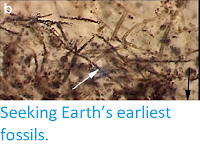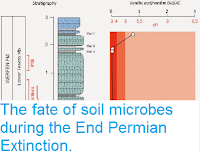Actinobacteria are Gram-positive, filamentous, aerobic Bacteria found in soils and aquatic ecosystems, where they play a significant role in the decomposition of Plant material and other organic matter, making them highly important in the formation and maintenance of soils. Some species of Actinobacteria are capable of 'fixing' nitrogen from the atmosphere (i.e. taking atmospheric nitrogen and using it to form nitrogen compounds that can be utilised by Plants). Members of the genus Streptomyces have long interested scientists for their ability to produce antibiotics and other potentially useful compounds, and recent discoveries of members of this genus living in extreme environments has opened up the possibility of further interesting discoveries.
In a paper published in the journal Antonie van Leeuwenhoek on 6 June 2017, Michael Goodfellow, Kanungnid Busarakam, and Hamidah Idris, of the School of Biology at Newcastle University, David Labeda of the National Centre for Agricultural Utilization Research, Imen Nouioui, and Roselyn Brown, also of the School of Biology at Newcastle University, Byung-Yong Kim of Seoul National University, Maria del Carmen Montero-Calasanz, again of the School of Biology at Newcastle University, Barbara Andrews of the Centre for Biotechnology and Bioengineering at the University of Chile, and Alan Bull of the School of Biosciences at the University of Kent at Canterbury, describe a new species of Streptomyces from the hyperarid Atacama Desert of Chile.
The species is named Streptomyces asenjonii, in honour of Juan Asenjo of the University of Chile, for his work on the Actinobacteria of the Atacama Desert. The species forms extensive colonies of branching filaments, with spiralling aerial hyphae that produce spores. It was able to grow at temperatures of between 10 and 50 °C and pH levels of between 5 and 11, though it grows best at a temperature of 37 °C and a pH of 7.5.
Scanning electron micrograph of Streptomyces asenjonii showing hairy ornamented spores in open spirals following growth on oatmeal agar at 28 °C for 14 days. Scale bar is 1 μm. Goodfellow et al. (2017).
See also...
Follow Sciency Thoughts on
Facebook.







